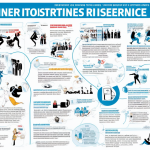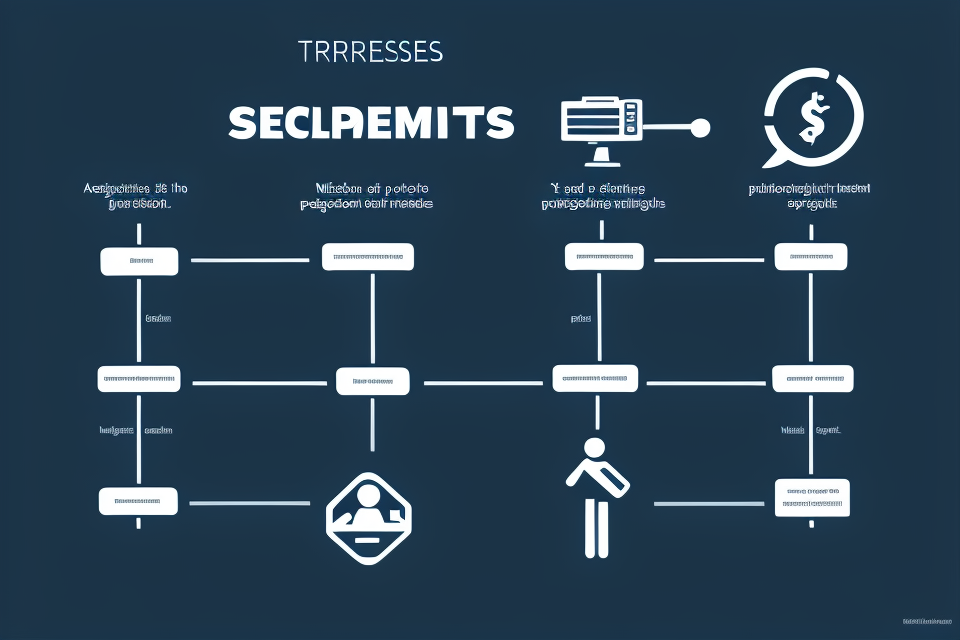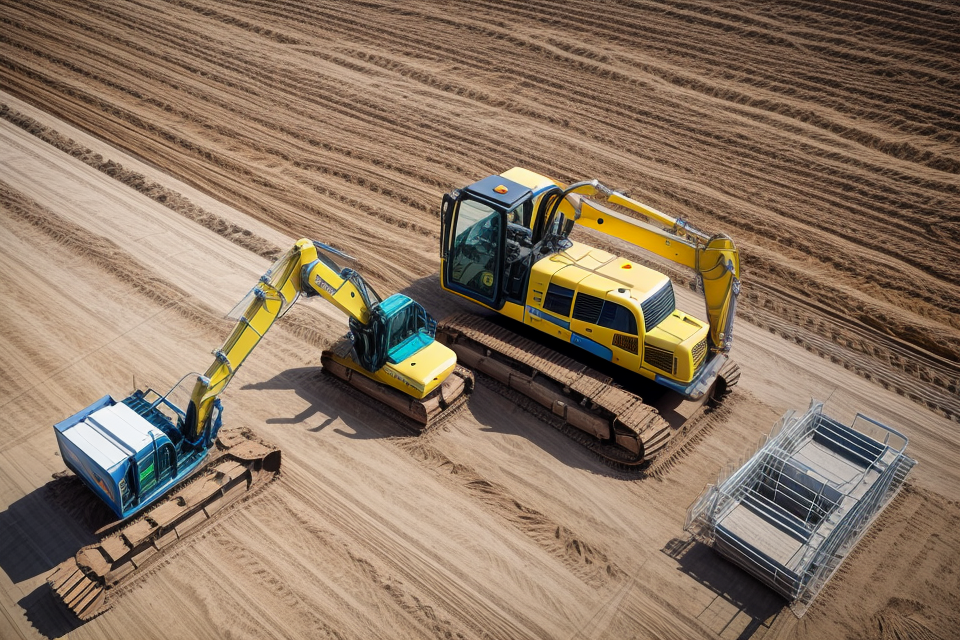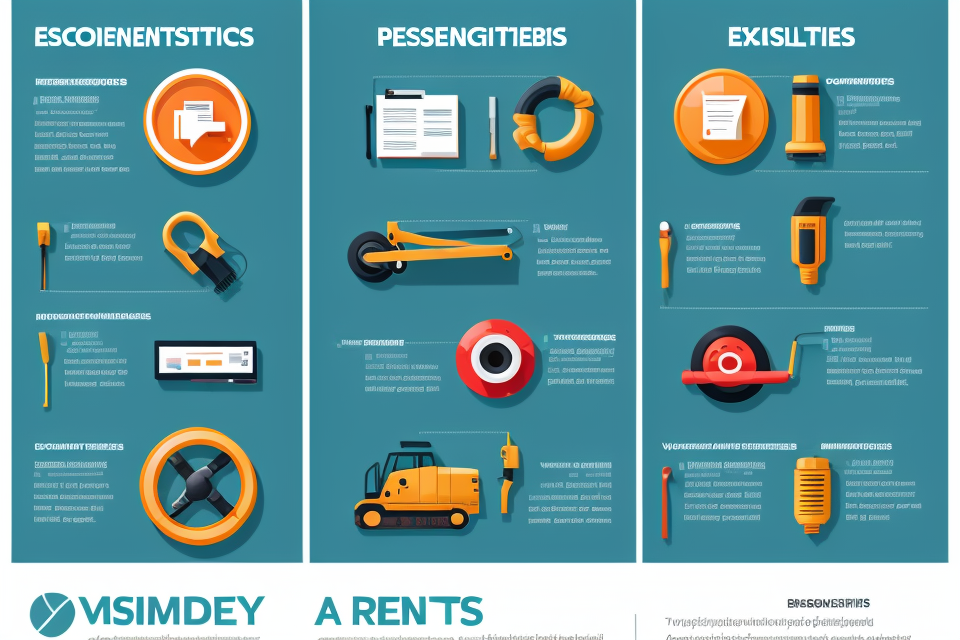Heating, Ventilation, and Air Conditioning (HVAC) systems are essential components of modern buildings, providing comfort and indoor air quality to occupants. Selecting the right HVAC equipment is critical to achieving optimal performance, efficiency, and reliability. In this comprehensive guide, we will explore the criteria for HVAC equipment selection, including design objectives, system requirements, energy efficiency, cost-effectiveness, and maintenance considerations. By understanding these key factors, building owners and managers can make informed decisions that will result in a comfortable, efficient, and sustainable indoor environment. Whether you’re planning a new installation or upgrading an existing system, this guide will provide valuable insights and practical tips for selecting the right HVAC equipment for your needs.
Factors Affecting HVAC Equipment Selection
Budget and Cost Considerations
When selecting HVAC equipment, budget and cost considerations play a crucial role in determining the final decision. It is important to consider the initial cost of the equipment, as well as the operating and maintenance costs that will be incurred over the life of the equipment.
Initial Cost of Equipment
The initial cost of the equipment is a significant factor in the decision-making process. The higher the initial cost, the higher the ongoing operating and maintenance costs will be. Therefore, it is important to evaluate the budget and determine the maximum amount that can be spent on the equipment.
Operating and Maintenance Costs
Operating and maintenance costs are essential factors to consider when selecting HVAC equipment. The cost of utilities such as electricity and fuel must be taken into account when selecting equipment. It is also important to consider the cost of regular maintenance and repairs that will be required to keep the equipment running efficiently.
Energy Efficiency and Utility Incentives
Energy efficiency is an important consideration when selecting HVAC equipment. Energy-efficient equipment can help reduce operating costs and lower the environmental impact of the system. Many utility companies offer incentives for the installation of energy-efficient equipment, which can help offset the initial cost of the equipment.
It is important to evaluate the total cost of ownership when selecting HVAC equipment. This includes not only the initial cost of the equipment but also the operating and maintenance costs over the life of the equipment. By considering these factors, it is possible to select equipment that meets the budgetary constraints while also providing efficient and reliable performance.
Building Requirements and Characteristics
- Size and layout of the building: The size and layout of the building are crucial factors to consider when selecting HVAC equipment. The amount of square footage, the number of floors, and the location of rooms all impact the HVAC system’s design and capacity requirements.
- Climate and local weather patterns: The climate and local weather patterns of the building’s location play a significant role in determining the appropriate type and capacity of HVAC equipment. For example, buildings in colder climates may require more substantial heating capacity, while buildings in warmer climates may need more extensive cooling capacity.
- Occupancy levels and usage patterns: The number of occupants and their usage patterns also influence HVAC equipment selection. High occupancy levels may require more extensive heating or cooling capacity, while buildings with varying usage patterns may require more flexible HVAC systems that can adapt to changing loads.
- Insulation and air tightness of the building envelope: The insulation and air tightness of the building envelope can significantly impact the performance of the HVAC system. Buildings with better insulation and air tightness may require less HVAC capacity, while buildings with poorer envelope performance may require more extensive HVAC systems to achieve comfortable indoor conditions.
System Efficiency and Performance
When selecting HVAC equipment, it is crucial to consider the system’s efficiency and performance. The following factors should be evaluated:
Energy Efficiency Ratings and Certifications
Energy efficiency ratings and certifications are important factors to consider when selecting HVAC equipment. The U.S. Environmental Protection Agency (EPA) offers the ENERGY STAR certification for energy-efficient HVAC systems. The certification indicates that the system meets specific energy efficiency criteria and can save energy and money over its lifetime. It is essential to consider the ENERGY STAR certification and other energy efficiency ratings to ensure that the selected HVAC system is efficient and cost-effective.
System Capacity and Zoning Capabilities
The system capacity and zoning capabilities of the HVAC equipment are critical factors to consider. The system capacity should match the size of the building and the number of occupants. It is important to select a system that can provide adequate heating and cooling to the building while avoiding oversizing, which can lead to increased energy costs and equipment wear. Zoning capabilities allow for individual control of different areas of the building, which can improve energy efficiency and comfort. It is essential to evaluate the zoning capabilities of the HVAC equipment to ensure that they meet the needs of the building.
Noise Level and Indoor Air Quality Considerations
Noise level and indoor air quality considerations are essential factors to consider when selecting HVAC equipment. The noise level of the system should be evaluated to ensure that it meets the requirements of the building’s occupants. HVAC systems that are too loud can cause discomfort and interfere with productivity. Indoor air quality considerations include evaluating the system’s ability to filter out pollutants and allergens, as well as its ability to maintain appropriate humidity levels. It is important to select a system that provides good indoor air quality to ensure the health and comfort of the building’s occupants.
Control Options and Integration with Building Automation Systems
Control options and integration with building automation systems are important factors to consider when selecting HVAC equipment. The HVAC system should be easy to control and provide flexible options for adjusting temperature and ventilation settings. Integration with building automation systems can improve energy efficiency and provide better control over the system. It is important to evaluate the control options and integration capabilities of the HVAC equipment to ensure that they meet the needs of the building and its occupants.
HVAC Equipment Types and Selection Criteria
Air Handling Units (AHUs)
When selecting an air handling unit (AHU), it is important to consider various factors that will impact the performance and efficiency of the system. Here are some key selection criteria to keep in mind:
Types of AHUs
There are several types of AHUs to choose from, each with its own unique features and benefits. Some common types include:
- Roof-top units: These units are typically installed on the roof of a building and are designed for outdoor air applications. They are often used in commercial and industrial settings where space is limited.
- Floor-mounted units: As the name suggests, these units are mounted on the floor and are typically used in larger spaces such as auditoriums or convention centers.
- Stand-alone units: These units are self-contained and can be moved from one location to another. They are often used in temporary spaces or for special events.
Capacity and Configuration Requirements
When selecting an AHU, it is important to consider the capacity and configuration requirements of the system. This includes the amount of air that the system needs to handle, as well as the layout of the building and the ductwork required to distribute the air.
Energy Recovery Options
Energy recovery options can help to improve the efficiency of the AHU and reduce energy costs. Some common energy recovery options include:
- Heat recovery: This involves recovering heat from the exhaust air and using it to preheat the incoming air.
- Economizer: This feature uses outside air to cool the building during the summer months, reducing the need for mechanical cooling.
Noise Level and Vibration Considerations
Noise level and vibration considerations are important when selecting an AHU. The noise level of the system should be evaluated to ensure that it will not disturb occupants of the building. Additionally, the system should be designed to minimize vibration and prevent damage to the building structure.
Chillers
Chillers are a crucial component of many HVAC systems, providing cooling for commercial and industrial buildings. When selecting a chiller, it is important to consider several key factors to ensure optimal performance and efficiency.
- Types of chillers: There are several types of chillers available, including water-cooled, air-cooled, and evaporative chillers. Each type has its own unique benefits and drawbacks, and the appropriate type will depend on the specific needs of the building and its HVAC system.
- Capacity and cooling load requirements: The capacity of the chiller must be carefully selected to match the cooling load requirements of the building. An oversized chiller will result in higher energy costs and inefficiencies, while an undersized chiller will not be able to meet the cooling demands of the building.
- Energy efficiency and seasonal energy efficiency ratio (SEER): Energy efficiency is a critical consideration when selecting a chiller, as it will directly impact the operating costs of the HVAC system. The SEER rating is a commonly used metric to measure the energy efficiency of chillers, with higher ratings indicating greater efficiency.
- Control options and integration with building automation systems: Chillers with advanced control options can provide greater flexibility and control over the HVAC system, and can be easily integrated with building automation systems for improved efficiency and monitoring.
In summary, when selecting a chiller for an HVAC system, it is important to carefully consider the type of chiller, capacity and cooling load requirements, energy efficiency, and control options. By selecting a chiller that meets these criteria, building owners and operators can ensure optimal performance and efficiency of their HVAC system.
Rooftop Units (RTUs)
When selecting rooftop units (RTUs) for a commercial or industrial building, it is important to consider various factors that will affect the system’s performance and efficiency. Some of the key factors to consider when selecting RTUs include:
Types of RTUs
There are two main types of RTUs: package units and split systems. Package units are self-contained units that include the condenser, compressor, and evaporator all in one cabinet. Split systems consist of an outdoor unit and one or more indoor units connected by refrigerant lines.
- Package units are typically more efficient than split systems because they have less ductwork and fewer connections.
- Split systems are more flexible and can be zoned for different areas of the building.
The capacity and configuration of the RTU must match the building’s heating and cooling needs. This is determined by calculating the building’s heat gain or loss, which depends on factors such as the building’s size, orientation, and insulation.
- A consultation with a qualified engineer or HVAC contractor is recommended to ensure the proper sizing and configuration of the RTU.
Energy Efficiency and SEER
The Seasonal Energy Efficiency Ratio (SEER) is a measure of the RTU’s efficiency, and it is important to select an RTU with a high SEER rating to minimize energy costs.
- A higher SEER rating indicates that the RTU is more efficient and will save more money on energy costs over time.
Noise Level and Outdoor Air Requirements
The noise level of the RTU must be considered, especially if the unit will be located near residential areas or areas where noise levels are restricted.
- Noise levels are typically measured in decibels (dB) and should be kept below the local noise ordinance levels.
- Outdoor air requirements such as the amount of fresh air required and the minimum outdoor air temperature should also be considered when selecting an RTU.
Variable Refrigerant Flow (VRF) Systems
When it comes to selecting HVAC equipment, variable refrigerant flow (VRF) systems are a popular choice for many commercial and residential applications. VRF systems offer a range of benefits that make them a versatile and efficient option for heating and cooling.
Capacity and zoning requirements
One of the key benefits of VRF systems is their ability to precisely control the amount of heating or cooling delivered to different areas of a building. This is achieved through the use of multiple indoor units connected to a single outdoor unit. By varying the amount of refrigerant sent to each indoor unit, VRF systems can provide precise temperature control to different zones within a building. This can help to reduce energy consumption by only heating or cooling the areas that need it, rather than the entire building.
Energy efficiency and SEER
VRF systems are known for their high energy efficiency, thanks in part to their use of inverter technology. Inverter-driven compressors can vary their speed based on the amount of heat or cooling required, which helps to minimize energy waste. Additionally, VRF systems typically have a seasonal energy efficiency ratio (SEER) of 16 or higher, which is more efficient than other types of HVAC systems.
Noise level and indoor air quality considerations
Another advantage of VRF systems is their relatively low noise level compared to other HVAC systems. The indoor units are typically much quieter than traditional HVAC systems, which can be an important consideration for commercial spaces that need to maintain a quiet environment for customers or employees. Additionally, VRF systems can help to improve indoor air quality by filtering out pollutants and allergens, which can help to create a healthier environment for building occupants.
Control options and integration with building automation systems
Finally, VRF systems offer a range of control options that can be integrated with building automation systems. This can help to improve energy efficiency and reduce maintenance costs by allowing building operators to remotely monitor and adjust HVAC settings. Additionally, some VRF systems come with advanced features such as wireless remote controls and smartphone apps, which can provide building occupants with greater control over their indoor environment.
Geothermal Systems
When it comes to selecting a geothermal system for heating and cooling, there are several factors to consider. Here are some key considerations to keep in mind:
- Types of geothermal systems: There are two main types of geothermal systems: ground-source and water-source. Ground-source systems use a series of pipes buried in the ground to transfer heat, while water-source systems use a nearby body of water as a heat source. Both types of systems have their own advantages and disadvantages, so it’s important to understand the differences between them.
- Capacity and heating/cooling load requirements: Geothermal systems come in a range of sizes and capacities, so it’s important to choose a system that can handle the heating and cooling needs of your building. This will depend on factors such as the size of the building, the insulation levels, and the local climate.
- Energy efficiency and equipment lifetime: Geothermal systems are known for their high energy efficiency, but not all systems are created equal. It’s important to compare the energy efficiency ratings of different systems and consider the long-term cost savings of a more efficient system.
- Soil conditions and site suitability: The suitability of a site for a geothermal system will depend on factors such as the soil type, soil density, and the depth of the groundwater table. A qualified geothermal contractor can help assess the suitability of a site for a geothermal system.
Other Considerations
Maintenance and Service
- Availability of local service providers: It is important to consider the availability of local service providers when selecting HVAC equipment. This is because in the event that the equipment requires maintenance or repair, having access to a local service provider can be crucial. In addition, local service providers may be more familiar with the specific needs and challenges of the local climate and building codes, which can be beneficial in ensuring that the equipment is properly maintained and serviced.
- Accessibility for maintenance and repairs: The accessibility of the equipment for maintenance and repairs is also an important consideration. For example, if the equipment is located in a hard-to-reach area, it may be more difficult and costly to perform maintenance and repairs. Therefore, it is important to consider the location of the equipment and its accessibility when making a selection.
- Equipment warranties and service agreements: Equipment warranties and service agreements can also play a significant role in maintenance and service considerations. Warranties can provide peace of mind in knowing that the equipment is covered by a manufacturer’s guarantee, while service agreements can provide ongoing maintenance and support for the equipment. It is important to carefully review the terms and conditions of any warranties or service agreements before making a final selection.
Future Growth and Expansion
When selecting HVAC equipment, it is important to consider the future growth and expansion of the building. Building expansion plans and timelines should be taken into account to ensure that the HVAC equipment can accommodate the additional space. The potential impact on existing HVAC equipment should also be considered, as well as the scalability and flexibility of the new equipment.
In addition, the cost-effectiveness of expansion options should be evaluated. It may be more cost-effective to upgrade existing equipment rather than replacing it entirely. The specific needs of the building, such as increased cooling or heating capacity, should also be taken into account when selecting HVAC equipment for future growth and expansion.
FAQs
1. What are the most important criteria for HVAC equipment selection?
When selecting HVAC equipment, it is important to consider a variety of factors. Some of the most important criteria include the size and layout of the building, the climate and local weather patterns, the expected load on the system, and the specific needs and preferences of the building occupants. Additionally, it is important to consider the efficiency and reliability of the equipment, as well as its potential for future expansion or upgrades.
2. How do I determine the appropriate size and type of HVAC equipment for my building?
To determine the appropriate size and type of HVAC equipment for your building, it is important to conduct a thorough assessment of the building’s heating and cooling needs. This may involve considering factors such as the building’s square footage, the number of occupants, the type of occupancy (e.g. office, manufacturing, etc.), and the local climate. It is also important to consider the building’s insulation and air tightness, as well as any specific requirements or regulations that may apply.
3. What are some key considerations when selecting HVAC equipment for specialized applications?
When selecting HVAC equipment for specialized applications, such as laboratories or clean rooms, it is important to consider the specific requirements of the application. This may involve considering factors such as the need for precise temperature and humidity control, the need for specialized filtration or air purification systems, and any specific safety or security requirements. It is also important to consider the potential impact of the HVAC system on the overall performance and functionality of the application.
4. How do I determine the efficiency and reliability of HVAC equipment?
To determine the efficiency and reliability of HVAC equipment, it is important to consider a variety of factors. These may include the equipment’s energy efficiency ratings, its maintenance and repair history, and any warranties or guarantees that may be offered. It is also important to consider the reputation of the manufacturer and the experience and qualifications of the contractors who will install and maintain the equipment.
5. How do I ensure that my HVAC equipment is properly installed and maintained?
To ensure that your HVAC equipment is properly installed and maintained, it is important to work with experienced and qualified contractors. This may involve researching local companies and checking their licenses and certifications, as well as reviewing customer reviews and ratings. It is also important to establish a regular maintenance schedule and to have the equipment inspected and serviced as needed.










